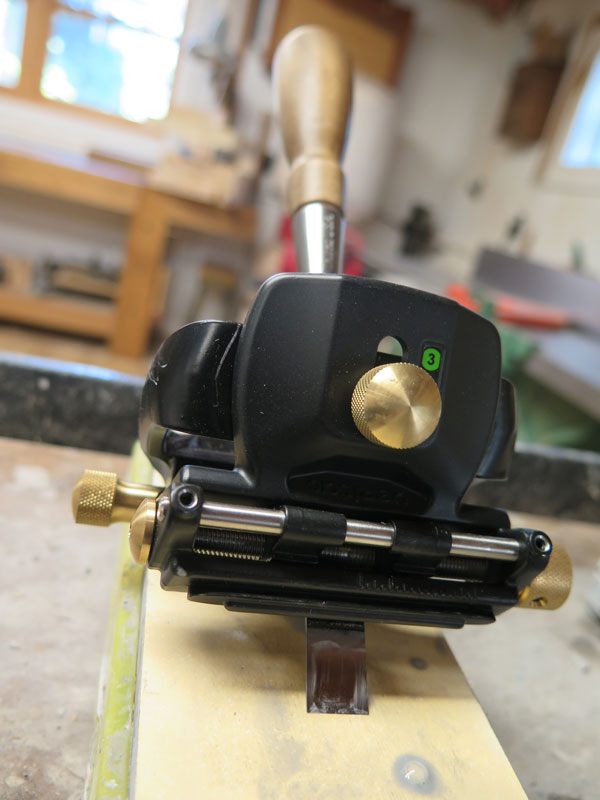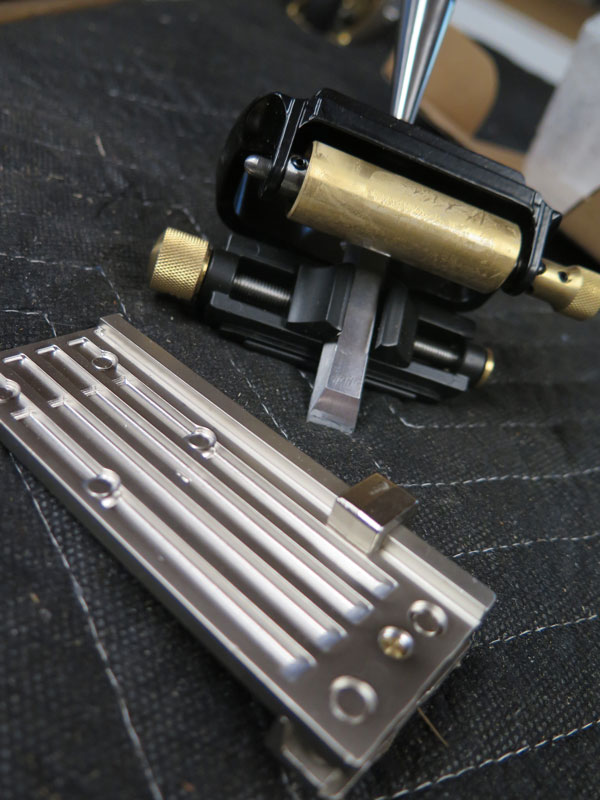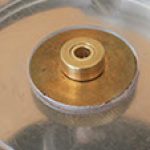We may receive a commission when you use our affiliate links. However, this does not impact our recommendations.
While many woodworkers have been worked up about the long-awaited honing guide from Lie-Nielsen, there is another new honing guide on the market this year that has been flying under the radar.
The Veritas Mk. II Narrow-blade Honing Guide offers up a major change in the way the company builds its guides. Until now, all of the Veritas guides have clamped the tool to be sharpened from top and bottom. The disadvantage to every top-clamping guide (regardless of maker) is that it can be difficult to prevent the tool from skewing while sharpening – particularly narrow blades.
But the new narrow-blade guide clamps from the sides, which ensures the tool won’t skew during sharpening. With the side-clamps and the company’s innovative way of setting the angle of the tool, this guide is a total winner – if the tool is 1-1/2” wide or less.
Today I spent a couple hours sharpening up all my narrow tools with the guide and could find no fault with the robust side-clamps or the angle-setting mechanism (which is already bulletproof). My concern was that tools would slip out of the jaws of the clamps if you pressed the tool hard to the stone during sharpening.
Because of the slight dovetail shape of the jaws, this is impossible. The harder you press the tighter the tool is held.
My second concern was that the side clamps would loosen up while sharpening – a common problem with cheap honing guides. Even though this guide clamps with finger pressure only, it held tight.
The only downside to the guide is its capacity of 1-1/2”.
The Veritas Mk. II Narrow-blade Honing Guide is completely compatible with the company’s other honing guides. All the rollers and angle-setting devices are swappable. You can buy the guide as part of a kit or separately for $84.50.
I really like this guide and will be interested to see if the side-clamp technology spreads to other honing guides in the Veritas family.
— Christopher Schwarz
Here are some supplies and tools we find essential in our everyday work around the shop. We may receive a commission from sales referred by our links; however, we have carefully selected these products for their usefulness and quality.











Ah, yes, the eternal question of the best way to sharpen! I have the Mk II …. and a real, honest to goodness Eclipse …. and, well, a few others. My sharpening skills are a poor but I try.
Anyways I guess I have settled mostly on the Eclipse for most of my chisels and plane irons – it is an elegant design from an engineering standpoint and works quite well most of the time. The MK II – I love the ability to set and reset the angle so precisely but the blade clamping is poor. If you have a narrow blade – forget it. If you have a chisel with a angle on the top of the blade – forget it.
I have often thought that if one were to combine the blade clamping scheme on the Eclipse with the MK II, you would have a very nice setup. The Eclipse uses sloping sides with a straight edge on one side and a curved edge on the other. If the new MK II duplicates that – well, maybe nirvana is close to hand. We’ll see.
How would you say the two honing guides compare to one another? What are each guides strengths over the other, if any? As always, thank you!!
Chris,
Have you evaluated the Lie-Nielsen guide?
I have moved on from the MkII system you reviewed to the Lie-Nielsen guide that was recently released. I found many narrow blades that did not remain securely held by the new LV narrow blade attachment. One came loose and gouged my water stone deeply. Lie-Nielsen openly states that their guide was designed primarily for their products. Lee Valley gives the impression that theirs will fit a range of narrow blades, but my experience was that chisels such as firmers or any chisel that does does not have sharply defined chamfers did not fair well. Other woodworkers I know seem satisfied with it. My conclusion is that it is best to not expect these devices to be universal.
Note to author: Check the price of the LV guide in your article. It is $48.50, not $84.50
If you, like myself, already own the Mk.II, just picking up the narrow-bade head will only set you back $48.50. LV makes pretty good stuff and I rely on the Mk.II heavily for most honing jobs. For several reasons I find the old eclipse style guides give me lots of trouble RE keeping a dead-nuts on straight and square edge. (I have MS and permanent numbness in both, but markedly in my left hand, so I pull the guide to my dominant hand which causes all sorts of joy during sharpening). The exception to that for me is putting camber on plane irons, especially something as curved as a jack plane iron, but LV has that solution in hand as well, if one wants to shell out a bit more dosh. All in all, I’ve had no problems with the Mk.II as is, even sharpening that almost useless but glad I have it once in a while 1/8″ chisel. I find if you keep balance on the clamping bar and count your turns of the locking nuts during tightening, finger tight as you can and then one more tweak with a pair of pliers, applying the pressure evenly across the chisel, skewing of the tool hasn’t been a problem. I, for me, probably won’t shell out for the new guide head, but I am in the market for a setup for my son, who needs to have the Zen of sharpening revealed to him. I already plan on getting him the Mk.II, but I’m on the fence on this new head vs. just an old eclipse style for cambered iron work. And one footnote? I just can’t get a warm fuzzy from the new LN guide, the interchangeable jaw thing just bugs me RE price point and the need to accumulate more “stuff”. To each their own, it is, as they say, what it is.
The other limitation is the thickness of bevel edged chisels (up to 15/32″ think) and straight edged chisels (up to 11/32″ thick). Wider chisels can be used in the original guide but I’m not sure about thick chisels. Perhaps a variety of wedges will be the cheap solution.